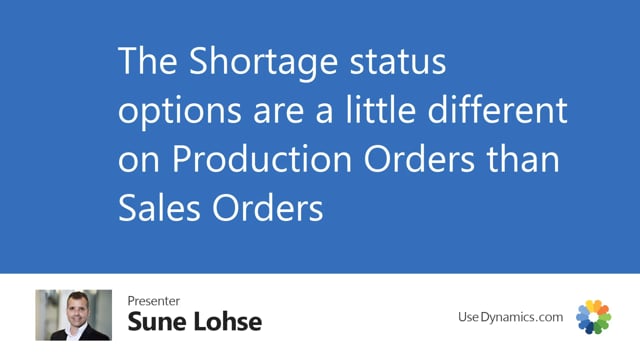
Playlists Manage
Log in to create a playlist or see your existing playlists.
Log inThe shortage status on the production orders has a little different meaning than on the sales order and actually, it’s more simple on the production order. Let’s look in a PowerPoint how that looks.
This is what happens in the video
The sales order statuses looks first on the top level item on stock if it’s on stock and then it looks into the hierarchy of components if possible. And this description is for the sales orders, but when you look at the production order status, it’s a little more simple because we have no interest in looking at the items on the top level meaning the item we’re going to produce, we have no interest in that stock. So the status are this: blank mean that no shortage is calculated yet or the outstanding quantity on the line is blank.
Complete pick means that there are enough items on stock to cover the component demand for the production order and none of the components will conflict and run out of stock on other demands.
Conflict pick means that there are enough items in stock to cover the component demand for that production order but there are not competent enough to cover all demands for all production orders.
Well as partial pick mean that there are enough items on stock to cover the component demands, but all the component at least a partial quantity that can be supplied so you can at least produce one or whatever items.
Whereas no pick mean that at least one of the component has no stock at all. This means that basically you can produce a single item.
And error means, of course, you have an error in t he calculation, for instance, a bill of materials that are not certified, a calendar that is not calculated, etc.

